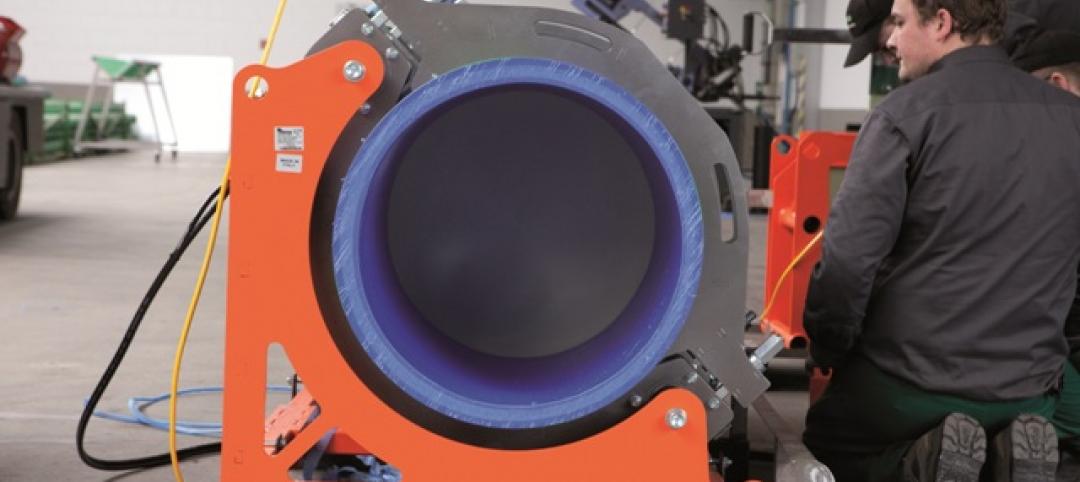Energy-efficient building design starts with the building envelope, but the building systems have a tremendous impact on energy use as well.
Commercial buildings consume a large portion of energy in the United States. The U.S. Energy Information Administration (EIA) says this is due to the increased use of existing electrical equipment and the introduction of new types of office equipment and telecommunication equipment. In fact, office equipment is one of the fastest-growing electrical uses in America, with 7% of total commercial energy use coming from these devices.
However, the energy consumption from office equipment is just a fraction of the total energy use in an office building. According to the EIA, 17% of a building’s overall energy use is for lighting, while 16% is for ventilation, 15% for cooling, and 2% for space heating. The EIA also found that elevator energy consumption represents about 5% of a building’s energy use—and that hydraulic-based elevator systems used in low-rise buildings are far less efficient than traction-based systems used in mid- and high-rise structures. (New elevator technology can reduce energy use by 30-40%.)
While overall energy consumption continues to increase in commercial buildings, owners and developers can make significant progress in reducing energy use by reevaluating and replacing older building systems, and specifying the latest energy-efficient systems for new builds.
Equipment standards of efficiency have been one of the most successful policies used by states and the federal government to reduce energy usage. The American Council for an Energy Efficient Economy (ACEEE) found that about 70% of potential new energy savings could come from updated water heaters, central air conditioners, heat pumps, electric motors, refrigerators, freezers, and commercial rooftop air conditioners.
Luckily, for building owners, advancements in HVAC systems, elevators, escalators and uninterruptible power supply (UPS) systems have resulted in modern building systems that improve performance, maximize reliability, and increase occupant comfort, while reducing energy usage. Let us look at some of the advancements in these building systems categories:
HVAC systems
Traditional HVAC systems are known for being imprecise and inefficient. To regulate the temperature of a space, hot and cold air need to be pumped into the spaces individually until the optimal temperature is reached. This not only leads to moments when spaces are too hot or too cold, it also requires more electricity to maintain ideal temperatures than newer variable refrigerant flow (VRF) technology. With VRF, hot and cold air can be piped in together, decreasing the amount of time and energy it takes to reach and maintain the proper temperature.
For the NoMad Los Angeles Hotel, the quiet and precise nature of the Mitsubishi Electric Trane US HVAC CITY MULTI Variable Refrigerant Flow system has been a pleasant surprise for guests. Ryan Bean, director of development with Sydell Group, the project’s developer, stated, “It’s funny because [the CITY MULTI VRF system] is so quiet that some of our guests think the heating and cooling system is not working at first because there’s no ‘kick on’ of the compressor or cold blast of air. After five minutes, our guests realize it’s on when they realize the room is comfortable. The simplicity of the Mitsubishi Electric technology has been great for our guests.”
Additionally, many traditional HVAC units provide the same airflow to multiple rooms in a building, regardless of occupancy and environmental factors like solar heat gain. Not only is energy wasted when unused rooms are being overly heated or cooled, but it can lead to different temperatures and levels of comfort throughout the building.
With modern systems, facility managers are able to pinpoint which rooms or zones within a space require temperature maintenance. This real-time, on-demand approach increases comfort for occupants and reduces overall costs for building owners and tenants. For a 19,000-square-foot building, that can lead to more than $5,000 in energy savings per year.
Elevators and escalators
Recent advancements in elevator and escalator technology are focused on reducing energy consumption, minimizing downtime and callbacks, and reaching new heights and speeds—all while providing a comfortable, safe, and secure experience for riders.
For example, Mitsubishi Electric has found a way to deliver a reliable, smooth ride with machine-room-less elevators while reducing energy use by up to 35%. When the elevator travels down with a heavy carload or up with a light carload, these actions are regenerative operations, meaning they are capable of generating electricity that can later power the car. The gearless traction works as a power generator by recycling heat that is usually generated and dissipated through use into the regenerative converter, which converts the heat back into electricity.
Destination dispatch systems maximize rider efficiency, while advanced door controls minimize door malfunctions—the most common source of elevator callbacks and downtime. These are just a few of the many ways owners can enhance the performance and success of their buildings with modern elevator and escalator systems.
Uninterruptible power supply
Critical for hospitals and data centers, where lost power can be detrimental to operations and health/safety, uninterruptible power supply (UPS) systems have been integrated into more buildings in recent years as companies and organizations become more reliant on digital devices.
Using proprietary double-conversion technology, UPS systems are designed to be up to 99% energy efficient. Rather than being a drain on energy, UPS systems are now quietly in the background of everyday tasks so they are there when needed.
As sustainability and energy efficiency become a larger conversation in the commercial real estate sector, a growing number of tenants and employees are asking what building owners and property managers are doing to reduce energy consumption. Creating an energy-efficient building from the inside out can help cut energy use, reduce overall costs, and recruit and retain tenants—all of which will have a tremendous impact on the owner’s bottom line.
For more information, visit BuildBetterTogether.com.
Related Stories
| May 24, 2012
2012 Reconstruction Awards Entry Form
Download a PDF of the Entry Form at the bottom of this page.
| Apr 3, 2012
SSOE acquires MEP Firm CRS Engineering & Design Consultants
The acquisition will expand SSOE’s Southeastern U.S. presence, broaden CRS’s reach to international markets, and provide both firms’ clients access to enhanced services and resources.
| Dec 21, 2011
BBI key to Philly high-rise renovation
The 200,000 sf building was recently outfitted with a new HVAC system and a state-of-the-art window retrofitting system.
| Dec 2, 2011
What are you waiting for? BD+C's 2012 40 Under 40 nominations are due Friday, Jan. 20
Nominate a colleague, peer, or even yourself. Applications available here.
| Oct 4, 2011
GREENBUILD 2011: Large diameter polypropylene-random pipe unveiled
Available in North America for large scale piping applications including high-rise buildings, large chilled water systems, district energy, and water mains.
| Mar 17, 2011
Hospitality industry turns to HTS Texas for ‘do not disturb’ air conditioned comfort
Large resort hotels and hospitality properties throughout the Southwest have been working with local contractors, engineers and HTS Texas for the latest innovations in quiet heating, ventilating and air conditioning (HVAC) equipment. The company has completed 12+ projects throughout Texas and the Southwestern U.S. over the past 18 to 24 months, and is currently working on six more hotel projects throughout the region.
| Mar 2, 2011
New ASHRAE standard may be too broad for the Canadian market
New Standard 189.1 from the American Society of Heating, Refrigeration, and Air-conditioning Engineers (ASHRAE), which goes beyond energy efficiency to include provisions that affect construction, post-occupancy monitoring, and site control, may be too much for the Canadian market—at least for now.
| Feb 22, 2011
Military tests show copper increases HVAC efficiency, reduces odors
Recent testing, which is being funded by the Department of Defense, is taking place in military barracks at Fort Jackson, South Carolina. Side-by-side comparisons demonstrate that air conditioning units made with copper suppress the growth of bacteria, mold, and mildew that cause odors and reduce system energy efficiency.
| Oct 12, 2010
Guardian Building, Detroit, Mich.
27th Annual Reconstruction Awards—Special Recognition. The relocation and consolidation of hundreds of employees from seven departments of Wayne County, Mich., into the historic Guardian Building in downtown Detroit is a refreshing tale of smart government planning and clever financial management that will benefit taxpayers in the economically distressed region for years to come.
| Oct 12, 2010
Gartner Auditorium, Cleveland Museum of Art
27th Annual Reconstruction Awards—Silver Award. Gartner Auditorium was originally designed by Marcel Breuer and completed, in 1971, as part of his Education Wing at the Cleveland Museum of Art. Despite that lofty provenance, the Gartner was never a perfect music venue.











